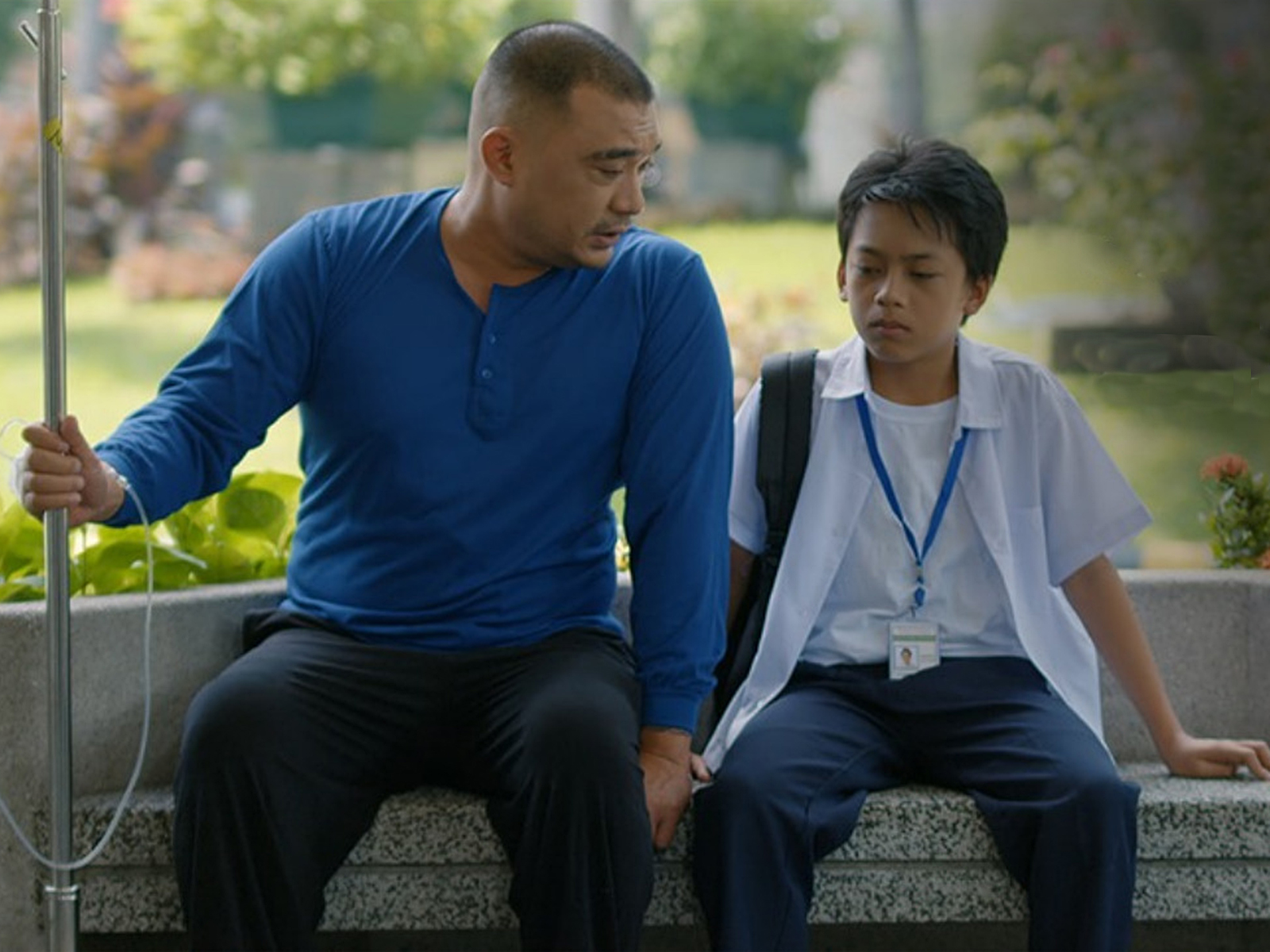
- Golden Globe Awards
The Fight Continues (Philippines): Interview with Carlo Ortega Cuevas
A drama with doses of humor, Guerrero Dos: Tuloy ang Laban (The Fight Continues) chronicles the struggles of a mother and her young son, Miguel (Julio Caesar Sabenorio). When Miguel’s brother, Ramon, falls into a coma after a boxing match, mother and son must soldier on, keeping vigil in the hospital while coping with their daily struggles. Born with a natural charisma and empathy for others, Miguel becomes a ray of sunshine in the hospital, inspiring and moving everyone he meets. The film is director Carlo Ortega Cuevas’ sequel to his own Guerrero. Cuevas also wrote the screenplay of his film, as he did with his other filmmaking credits. Cuevas, whose lifelong passion for visual expression led him to study Communication Arts in college, likes his films to inspire and give hope.
Child actor Julio Caesar Sabenorio, playing Miguel Guerrero, holds the film together. He’s a natural. How did you find him?
Julio Caesar Sabenorio’s first acting experience was a bit player role for an amateur short film directed by Genesis Gomez, who played the role of Ramon Guerrero. The first time I asked Julio to deliver a line, he was shaking. He was crying. He couldn’t even say a word, but I felt something in this kid. That’s why I tried to comfort him. I even played one-on-one basketball with him just to make him feel relaxed. And when he delivered a line, he got me. He got us. I was shaking. I was crying.
Julio delivers his lines spontaneously. How many of them were adlibbed?
Most of the dialogue in the film was written, especially for Julio’s part. I wanted him to focus on how to deliver those lines.
Julio seems like a 50-year-old trapped in a 15-year-old’s body. He’s an “old soul,” as they say. Did you see that too, especially when you saw him act?
I never felt that I was working with a kid. He is a natural when it comes to acting. Believe it or not, he didn’t even undergo any formal acting workshops! He is a teen, but the way he acts is already like that of a veteran actor.
Amid the comedy, the film tackles depression and mental health. How challenging was it to combine serious themes with humor?
It was very challenging to tackle a serious issue on mental health combined with subtle humor. We had to be very careful and sensitive on execution. Timing was very important. It’s about “where and when” to throw a joke, and “where and when” to touch a heart.
After your research for the film, do you think many depression and mental health cases in the Philippines go undiagnosed and therefore, not properly treated?
There is a thin line between sadness and depression, between emotion and mental sickness. That’s why many cases here in the Philippines are undiagnosed and therefore, untreated. Filipinos are resilient. Filipinos are jolly.
Sometimes we think that we can overcome depression without medical help. But for me who believes in God, I fully believe that He is the one who can heal us; He uses experts or medications as instruments for us to be cured.
You appeared to have the run of the hospital where you shot most of the film. What were the filming conditions like?
The part of the hospital building where we shot the movie is not operational. It is an old building. But we had to minimize the filming noise because the new building of the hospital is just beside our location shoot.
Will there be a Guerrero Tres?
Many are really clamoring for Guerrero Tres, but for me, as of now, I’m satisfied to end Guerrero on this sequel. There is always the challenge to see if the sequel will equal the effectiveness of the first part. I think we succeeded in this aspect because Guerrero Dos, as it turned out, became more effective than the first one. The proof? The viewers badly want and ask for Part Three.
What are the challenges being faced by the Philippine film industry?
I think the biggest challenge of the film industry now, especially in the Philippines, is the ongoing Covid-19 pandemic. It changes a lot of things, especially in producing films. Health and safety protocols are strictly implemented in film productions.
The number of people in production is reduced. And you can’t simply go to locations without government permissions. Film distribution is also a big problem, because theater houses here in the Philippines are closed. We are not sure yet when the government will allow the cinemas to reopen.
So, to cope with this challenge, we follow the protocols. Stories to be made for films should adapt, and be viable to being produced even with the strictest protocol implemented. These days, we are not shooting for regular cinema showings in the new films that we are producing. But we are tapping the different social media platforms and online streaming services for us to showcase our product to the viewers.
What dreams and hopes do you still have as a filmmaker?
The first time I decided to make a film, my goal was just to entertain. But then, there was something more important that I visualized, that will make films more effective to the viewers. They need to educate and inspire even in the simplest way.
So when Guerrero Dos was made, I can say I fulfilled this. I remember when we premiered the film, a member of the audience talked to me and said, “Carlo, your film made me eager to go to my mother’s house tonight, hug her so tight and tell her how I love her so much.”

